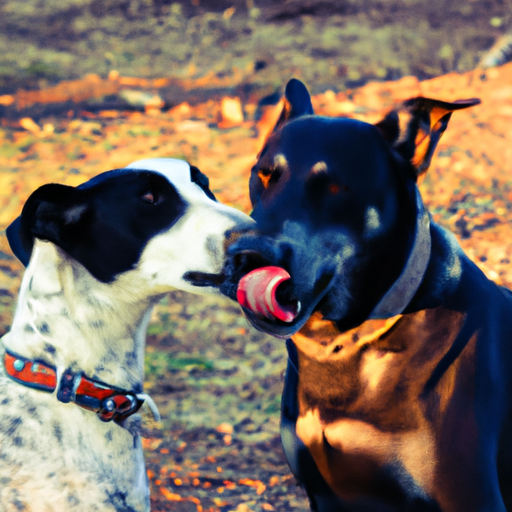As a caregiver to your furry friend, you’re probably baffled when you see your dog licking another dog after a fight. This behavior may seem odd and counter-intuitive to us humans, but for dogs, it’s a part of their complex social communication. Let’s delve into the reasons behind this peculiar behavior.
Understanding Canine Behavior
Before we dive into the specifics of post-fight licking, it’s essential for you to understand the basics of canine behavior.
Dogs, just like us humans, have evolved a sophisticated system of non-verbal communication. They use body language, vocalization, and even scent to communicate with each other. These forms of communication are crucial in maintaining social order and avoiding conflicts.
Dogs use a variety of signals to convey their intentions, emotions, and status. These signals include body postures, tail wagging, growling, barking, and of course, licking.
The Social Significance of Licking
-
Submission: Often, dogs will lick each other as a sign of submission. By doing so, they are showing that they acknowledge the other’s higher status. This is especially common after a fight, where the losing dog will lick the winner to accept defeat.
-
Affiliation: Dogs also lick each other to strengthen social bonds. After a fight, this is a way for dogs to mend their relationship and re-establish their friendship.
-
Reconciliation: Similar to humans making up after an argument, dogs lick each other to show that they want to make peace. This is a way for them to signal that the fight is over and they want to return to a peaceful coexistence.
-
Grooming: Sometimes, dogs will lick each other simply for grooming purposes. But after a fight, this is less likely to be the reason.
The Science Behind Licking
There is some science behind why dogs lick each other after a fight. When dogs lick, they release endorphins, which are chemicals in the brain that promote feelings of comfort and pleasure. This can help them to calm down and reduce stress after a fight.
Furthermore, licking can stimulate the release of oxytocin, also known as the ‘bonding hormone’. This hormone plays a key role in social bonding, not just in dogs, but in many animals, including humans.
How to React as a Caregiver
As a caregiver, it’s important for you to understand and respect your dog’s social behavior. Here are a few things you should do:
-
Don’t interfere: Unless the fight becomes too aggressive or one dog appears to be in danger, it’s best not to interfere. Dogs have their own way of resolving conflicts.
-
Monitor their behavior: Keep an eye on your dogs after a fight. If you notice any signs of ongoing aggression or stress, it may be necessary to intervene.
-
Seek professional help: If fights are frequent or violent, it may be a good idea to seek help from a professional dog trainer or behaviorist.
Frequently Asked Questions
Why do dogs fight?
Dogs fight for a variety of reasons, including territorial disputes, competition for resources, and to establish dominance. It’s a natural behavior in dogs, but it should be managed to prevent injury.
What should I do if my dogs fight frequently?
If your dogs fight frequently, it’s important to seek help from a professional. They can provide you with strategies to manage your dogs’ behavior and prevent future fights.
Is it normal for dogs to lick each other after a fight?
Yes, it’s a normal part of canine social behavior. It’s a way for dogs to communicate and maintain social order.
How can I help my dogs get along better?
You can help your dogs get along better by providing them with plenty of resources (like toys, beds, and food bowls), giving them each individual attention, and ensuring they are properly socialized.
What does it mean when a dog licks a human?
When a dog licks a human, it can mean a variety of things. It could be a sign of affection, a way to get your attention, or simply because they like the taste of your skin. It’s important to pay attention to the context to understand what your dog is trying to communicate.



